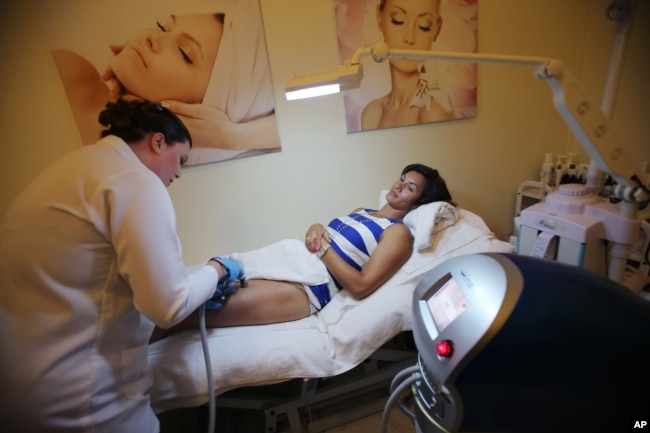危険を伴うアメリカの医療ツーリズム
日本だと、アメリカに行って難しい手術を受ける。。というイメージでした。
アメリカの医療費が高いのはご存知の通り、メキシコの医療費を知るとなるほどと思います。
しかしながら、このニュース、最後の言葉に納得です。
皆さん、健康には気をつけましょう!!
VPOAで英語を学びましょう!
専門家の話 医療ツーリズムにはいくつかのリスクがある(和訳)
Experts: Medical Tourism Has Several Risks
March 13, 2023
最近、メキシコで起きた4人のアメリカ人の誘拐事件は、多くのアメリカの人々にとっての常識:医療ツーリズムに注目が集まりました。
医療ツーリズムとは、自国では受けられない、あるいは費用がかかりすぎる医療を受けるために他国へ渡航することです。
4人のアメリカ人は、麻薬組織間の銃撃戦に巻き込まれました。2人は殺され、2人はメキシコの僻地で拘束されました。家族の話では、4人は米国から旅行に来ていて、そのうちの1人がマタモロスの医師から美容整形を受けるためでした。
専門家は、人々は多くの医療処置を受けるために米国を離れると言います。美容整形、歯科治療、がん治療、医薬品の購入などです。
成長する医療ツーリズム
リディア・ガン氏は、ノースカロライナ大学ペンブローク校のエコノミストです。彼女によると、医療ツーリズムは何年も前から人気が高まっているそうです。
この種の旅行は、健康保険に加入していない人や、数千ドルの追加費用を支払う必要がある健康保険に加入している人に人気があります。企業が、股関節や膝関節の置換術などの医療処置のために、保険適用者を外国に派遣することもあります。また、より安価な医薬品のためにメキシコに派遣する企業もあります。
ジョナサン・エデルハイト氏は、業界団体であるメディカル・ツーリズム・アソシエーションの代表を務めています。彼はAP通信に、メキシコなどの国の医療費はアメリカよりも50%以上安くなることがあると言います。また、数千ドルもする美容整形手術は、米国の医療保険会社ではほとんどカバーされません。
患者は、米国外で迅速な治療を受けることができるため、旅行することもあります。また、自分の言語を話す医師や同じ文化圏の医師から治療を受けたいと思うこともあります。
業界団体の出版物であるMedical Tourism Magazineは、2019年に世界中で370億ドル以上が医療観光に費やされたと述べています。メキシコの他に、医療観光の上位5カ国は、カナダ、シンガポール、日本、スペイン、イギリスだと同誌は述べています。その他、ドバイ、コスタリカ、イスラエル、アブダビ、インドなどがあります。
2019年、都市国家であるシンガポールは、コストがかからず、質の高い医療を受けられるとして、50万人以上の外国人観光客を受け入れました。例えば、心臓のバイパス手術は、米国では14万ドルかかるのに対し、シンガポールでは2万5千ドルです。スペインでは、フェイスリフトなどの美容整形手術の平均費用は、米国では15,000ドルであるのに対し、5,000ドルです。
医療ツーリズムのリスク
米国疾病管理予防センター(またはCDC)によると、毎年数百万人の人々が治療のために米国から他国へ渡航しているそうです。
研究者のアルトゥーロ・ブスタマンテ氏は、COVID-19が登場する以前は、毎年40万人が治療のために米国からメキシコに渡航していたと推定しています。カリフォルニア大学ロサンゼルス校の医療政策教授は、治療のためにメキシコを訪れる人のほとんどは、米国に住むメキシコ人またはラテン系の移民だと言います。
彼は、ラテン系以外の患者は主に、歯の治療や処方薬の購入、米国では保険適用外の美容整形手術や一部のがん治療を受けるために国境を越えていると言います。
しかし、CDCは、医療ツーリズムは国や医療機関によってはリスクを伴う可能性があると警告しています。そのリスクとは、感染症、医療の質、言葉の問題、フォローアップケアなどだと保険機関は言います。
リスクを減らすために、CDCは旅行をする前に医療機関や旅行医学の専門家と協力することを勧めています。ノースカロライナ州のリディア・ガン氏は、医療提供者が空港で患者をピックアップし、ヘルスセンターやホテルまで連れて行くことが多いと指摘しています。
CDCは、患者は医療提供者やヘルスセンターを調べるべきだと言います。メディカル・ツーリズム協会のエデルハイト氏は、患者は価格を考える前に、医療の質を調査するべきだと付け加えています。医療観光協会のエーデルハイト氏は、「患者さんは、最高の医療を受けられるかどうかを確認する必要があります」と述べています。
患者が国や医療機関を選んだら、CDCは医療記録を持参し、健康上の問題があれば医療従事者に知らせるよう助言しています。手術後は、新しい医療記録のコピーを取り、フォローアップケアを計画するよう、CDCは言っています。
患者にとってのリスクは、処置が終わっても終わらないかもしれません。帰国後に健康上の問題が発生した場合、主治医が旅行中に受けた治療について詳細を知ることは難しいかもしれません。
Experts: Medical Tourism Has Several Risks
The recent kidnapping of four Americans in Mexico brought attention to a common practice for many people in the United States: medical tourism.
Medical tourism is traveling to other countries to receive medical care that is not available or too costly at home.
The four Americans were caught in a shootout between criminal drug organizations. Two were killed and two were held in a remote area of Mexico. A family member said the four were on a trip from the U.S. so that one of them could get cosmetic surgery from a doctor in Matamoros.
Experts say people leave the U.S. to get many medical procedures. These include cosmetic surgery, dental care, cancer treatments and buying medicines.
Medical tourism growing
Lydia Gan is an economist at the University of North Carolina at Pembroke. She said medical tourism has been growing in popularity for years.
This kind of travel is popular with people who have no health insurance or health plans that require them to pay thousands of dollars in additional costs. Sometimes, companies send people covered by their insurance to other countries for medical procedures like hip or knee replacements. Some companies also send people to Mexico for less costly medicines.
Jonathan Edelheit is head of the Medical Tourism Association, an industry trade group. He told the Associated Press that medical care costs in countries like Mexico can be more than 50 percent lower than in the U.S. Also, cosmetic surgeries that cost thousands of dollars are largely not covered by U.S. health insurers.
Patients sometimes travel because they can get quick care outside the U.S. They also might want to seek treatment from a doctor who speaks their language or comes from the same culture.
Medical Tourism Magazine, the trade group’s publication, said over $37 billion was spent on medical tourism in 2019 around the world. Besides Mexico, the publication said the top five countries for medical tourism are Canada, Singapore, Japan, Spain, and Britain. Other places include Dubai, Costa Rica, Israel, Abu Dhabi, and India.
In 2019, the city-state of Singapore received more than 500,000 foreign visitors for its less costly and high-quality healthcare. For example, heart bypass surgery could cost $140,000 in the U.S. compared to $25,000 in Singapore. In Spain, the average cost of cosmetic surgery such as a face lift could be $5,000 instead of $15,000 in the U.S.
Risks of medical tourism
The U.S. Centers for Disease Control and Prevention (or CDC) says millions of people from the U.S. travel to other countries for care each year.
Researcher Arturo Bustamante estimates that 400,000 people traveled from the U.S. to Mexico each year for care before COVID-19 appeared. The University of California, Los Angeles health policy professor said most of the people visiting Mexico for care are Mexican or Latino immigrants living in the U.S.
He said non-Latino patients mainly cross the border to get treatment for their teeth, buy prescription drugs, or to receive cosmetic surgery or some cancer treatments not covered in the U.S.
However, the CDC warns medical tourism could be risky depending on the country and the medical center. Among the risks, the health agency says, are infectious diseases, quality of care, language difficulties and follow-up care.
To reduce risks, the CDC advises people to work with a healthcare provider or travel medicine provider before making the trip. Lydia Gan of North Carolina noted that care providers often have someone pick patients up at the airport and take them to the health center or hotel.
The CDC says patients should research healthcare providers and health centers. Edelheit of the Medical Tourism Association added that patients should research care quality before considering prices. “They really need to make sure they are going with the best of the best,” he said.
Once patients choose a country and provider, the CDC advises to bring medical records and to inform medical workers of any health problems. After a procedure, the agency says to get copies of all new medical records and to plan for follow-up care.
The risk for patients may not end after a procedure. If someone has medical problems after returning home, it may be hard for their doctor to learn the details about the care received during a trip.
Words in This Story
practice –n. something that is done often or regularly by one or many people
remote –adj. far away from where most people are
cosmetic surgery –n. a kind of medical operation that is not aimed at improving a health problem but that is meant to improve a person’s appearance
procedure –n. a medical operation or treatment that is not simple
insurance –n. a policy from a company that pays for certain defined costs in exchange for regular payments
hip –n. the part of the body between the waist and the legs formed by the pelvic bone
knee –n. the joint between the upper and lower leg

